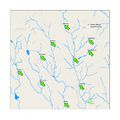Difference between revisions of "ISSS608 2017-18 T3 Assign Yeo Kaijun Method"
| (9 intermediate revisions by the same user not shown) | |||
| Line 1: | Line 1: | ||
<div style=background:#2B3856 border:#A3BFB1> | <div style=background:#2B3856 border:#A3BFB1> | ||
| − | + | [[Image:Duck_kj.jpg|300px]] | |
<font size = 5; color="#FFFFFF"><b>VAST Mini Challenge 2: Methodology</b></font> | <font size = 5; color="#FFFFFF"><b>VAST Mini Challenge 2: Methodology</b></font> | ||
</div> | </div> | ||
| Line 16: | Line 16: | ||
| style="font-family:Century Gothic; font-weight:bold; font-size:100%; text-align:center; background-color:#DDA0DD; width=25%" | | | style="font-family:Century Gothic; font-weight:bold; font-size:100%; text-align:center; background-color:#DDA0DD; width=25%" | | ||
; | ; | ||
| − | [[ISSS608 2017-18 T3 Assign Yeo | + | [[ISSS608 2017-18 T3 Assign Yeo Kaijun_Links|<font color="#000000">Links</font>]] |
|} | |} | ||
<br><br> | <br><br> | ||
| Line 31: | Line 31: | ||
3. Comparison with a standardized water quality criteria | 3. Comparison with a standardized water quality criteria | ||
| − | 1. Comparison between different area | + | <span style="font-size:16px; font-weight:bold;">1. Comparison between different area</span> |
<gallery> | <gallery> | ||
File:Waterways Final.jpg | File:Waterways Final.jpg | ||
</gallery> | </gallery> | ||
| − | + | There are 10 locations where waterway samples are conducted. Upon noticing any anomalies through methods 2 or 3, a comparison across locations will be done to investigate the source of the anomaly | |
| − | |||
| − | |||
| − | |||
<br><br><br> | <br><br><br> | ||
| − | 2.Comparison across time | + | <span style="font-size:16px; font-weight:bold;">2.Comparison across time<br></span> |
Firstly, the waterways will be analyzed as a whole using a highlight cell chart, where % increase/decrease compared to the previous year will be highlighted. 2 main trend will be flagged out and further analyzed: | Firstly, the waterways will be analyzed as a whole using a highlight cell chart, where % increase/decrease compared to the previous year will be highlighted. 2 main trend will be flagged out and further analyzed: | ||
<br> | <br> | ||
| − | 1. Sharp % increase/decrease | + | 1. Sharp % increase/decrease<br> |
2. Consistent increases | 2. Consistent increases | ||
| − | <br> | + | <br><br> |
| − | As the data are no collected consistently for all years across all areas, a sharp % increase/decrease can indicate the following: | + | As the data are no collected consistently for all years across all areas, a sharp % increase/decrease can indicate the following:<br> |
| − | 1. There is a sharp increase of pollutant dumping in an area in the waterway during the year | + | 1. There is a sharp increase of pollutant dumping in an area in the waterway during the year<br> |
2. There was an area with high values of pollutant that was not sampled in the current/previous year | 2. There was an area with high values of pollutant that was not sampled in the current/previous year | ||
| − | <br> | + | <br><br> |
A consistent increase of pollutant would also be a case of concern as it might indicate that pollutants are building up in that area | A consistent increase of pollutant would also be a case of concern as it might indicate that pollutants are building up in that area | ||
| − | <br> | + | <br><br> |
Pollutants with the above mentioned situations will be further delved in to figure out the area of concern | Pollutants with the above mentioned situations will be further delved in to figure out the area of concern | ||
<br><br><br> | <br><br><br> | ||
| − | 3. | + | <span style="font-size:16px; font-weight:bold;">3. Comparison with a standardized water quality criteria<br></span> |
| + | To check for high levels of pollutant levels, the avg pollutant value and max pollutant value for each pollutant for the past 5 years will be compared with [https://www.epa.gov/wqc/national-recommended-water-quality-criteria-aquatic-life-criteria-table US National Recommended Water Quality Criteria]. Any avg pollutant values above the continuous concentration criterion or any max pollutant values above the maximum concentration criterion will be highlighted and will indicate that the water might be polluted | ||
| + | |||
| + | *Note: It is important to change the values to fit the units provided in the waterways sample datasets | ||
| + | <br><br> | ||
| + | <div style="background:#000000; border:#002060; padding-left:15px; text-align:left;"> | ||
| + | <font size = 3; color="#FFFFFF"><span style="font-family:Century Gothic;">Software used</span></font> | ||
| + | </div> | ||
| + | The main software used in data preparation and analysis are:<br> | ||
| + | 1. Tableau<br> | ||
| + | 2. Microsoft Excel | ||
<br><br> | <br><br> | ||
[[Assignments|<font face="Segoe UI Light" color="#3C33FF">Back to Assignments</font>]] | [[Assignments|<font face="Segoe UI Light" color="#3C33FF">Back to Assignments</font>]] | ||
Latest revision as of 18:37, 8 July 2018
|
|
|
|
|
Methodology
The data will be analyzed upon 3 different methods:
1. Comparison between different areas
2. Comparison across time
3. Comparison with a standardized water quality criteria
1. Comparison between different area
There are 10 locations where waterway samples are conducted. Upon noticing any anomalies through methods 2 or 3, a comparison across locations will be done to investigate the source of the anomaly
2.Comparison across time
Firstly, the waterways will be analyzed as a whole using a highlight cell chart, where % increase/decrease compared to the previous year will be highlighted. 2 main trend will be flagged out and further analyzed:
1. Sharp % increase/decrease
2. Consistent increases
As the data are no collected consistently for all years across all areas, a sharp % increase/decrease can indicate the following:
1. There is a sharp increase of pollutant dumping in an area in the waterway during the year
2. There was an area with high values of pollutant that was not sampled in the current/previous year
A consistent increase of pollutant would also be a case of concern as it might indicate that pollutants are building up in that area
Pollutants with the above mentioned situations will be further delved in to figure out the area of concern
3. Comparison with a standardized water quality criteria
To check for high levels of pollutant levels, the avg pollutant value and max pollutant value for each pollutant for the past 5 years will be compared with US National Recommended Water Quality Criteria. Any avg pollutant values above the continuous concentration criterion or any max pollutant values above the maximum concentration criterion will be highlighted and will indicate that the water might be polluted
- Note: It is important to change the values to fit the units provided in the waterways sample datasets
Software used
The main software used in data preparation and analysis are:
1. Tableau
2. Microsoft Excel

